[caption id="" align="alignnone" width="450" caption="At the port there were several of these children that will dive for money that gets thrown in the water"]
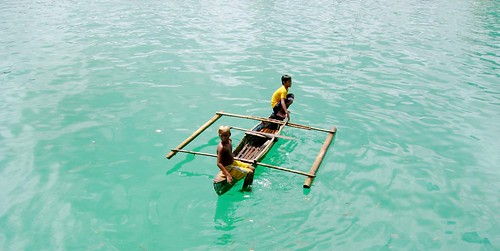 [/caption]
[/caption]The Supercat was on the dot. Once boarded, it left the port and was in Tagbilaran pass 10. At the Tagbilarn port, I observed the crystal clear water; I don’t know its depth but it so clear that you could see the sands and the fishes underneath. It is true that Bohol remains as one of the cleanest provinces in the country. I then flagged a tricycle and contracted the driver to bring me to three places in Tagbilaran, before going here I had already planned everything, my list is long and I only have two days to complete this excursion.
[caption id="" align="alignnone" width="396" caption="The Cathedral of St. Joseph the Worker"]
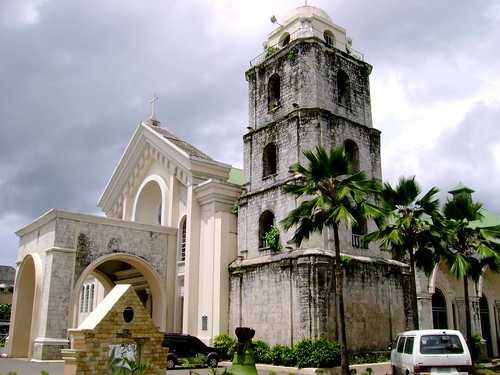 [/caption]
[/caption][caption id="" align="alignnone" width="401" caption="One of the original bells brought down from the tower, exposed to all the elements while its on display just outside the Cathdral"]
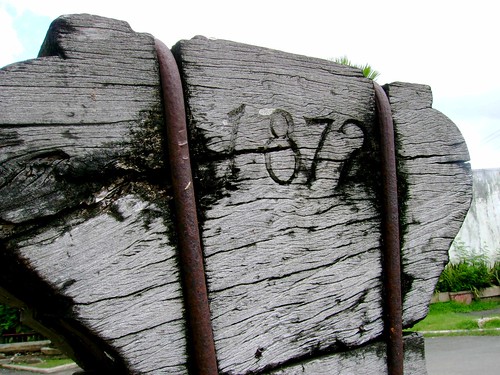 [/caption]
[/caption]The province being one of the first to be Christianized offers a great deal of treasures for heritage tourist. The construction of churches and convents was a community task, referred to as polo y servicio. Often mistaken as a form of forced labor, most of the labor rendered was essentially acts of Filipino religiosity and that the majority Boholano’s has remained faithful to their Catholic devotion is a tribute to the tradition their ancestors had practiced.
I first visited Bohol’s Cathedral, built to honor St. Joseph the worker, it was first built in 1787 and was burned to in 1798 (along with its convent). In 1839, Fray Valero de San Sebastian rebuilt the church; it took him 16 years to finish. The Cathedral’s bell tower is very impressive, it has 6 bells – with embossed dates, interesting is that the bells does not have similar years. This could only be explained by the years it took to complete the tower which was headed by the Recollect Fray Jose Sanchez. A certain Fray Enciso added iron cornices, chandeliers and tisa roofing in 1884 – 1894.
The Cathedral is among the first six churches built by the true pioneers of the Bohol territory, the Jesuits – all their church and properties were given to the Recollect when the black robes were expelled. This Neo-Romanesque church is one of the finest churches in Central Visayas, it has stood the test of time for centuries but in 1950 its coral stone facade were covered by cement and renovations afterwards has altered some of its most beautiful original materials.
[caption id="" align="alignnone" width="410" caption="One of the oldest casa in Tagbilaran"]
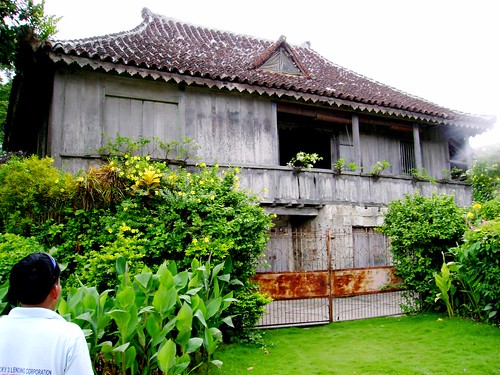 [/caption]
[/caption][caption id="" align="alignnone" width="418" caption="An interesting casa which is said to have been made in the late 1800's"]
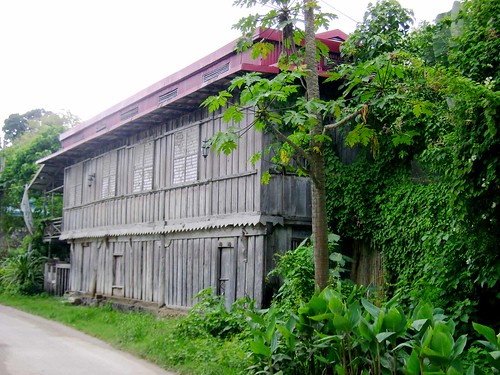 [/caption]
[/caption]After the Cathedral I went to the old houses near Tagbilaran causeway, this area is the original Tagbilaran here one could find the villas of the rich Tagbilaran residents. In Sitio Ubos one could Casa Rocha, it was closed when I got there but all over the quarter I found houses that give the area a Filipino character, the houses were built in style that united Hispanic inspiration and Filipino ingenuity. What’s truly amazing is that the casa’s architectural integrity has remained whole for centuries.
[caption id="" align="alignnone" width="428" caption="Plaza Principe across is the park and the Cathedral, shown here being repainted"]
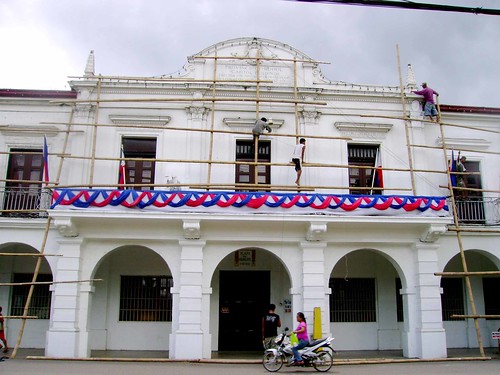 [/caption]
[/caption][caption id="" align="alignnone" width="375" caption="An interesting old house right beside the Museo"]
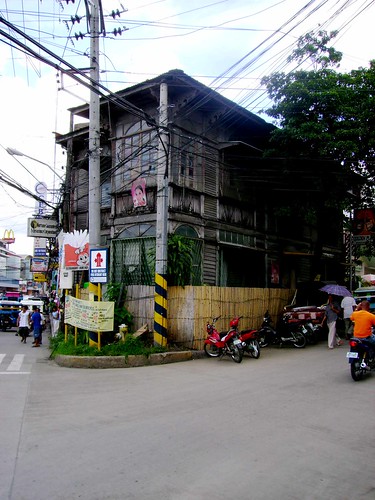 [/caption]
[/caption]Just in front of the Cathedral is the provincial capitol building which was before as Plaza del Principe founded in 1860. On its left is Bohol Museum, formerly the province library it was an old school during the Spanish era called Escuela La Nina.
[caption id="" align="alignnone" width="420" caption="Legaspi and his new friend "]
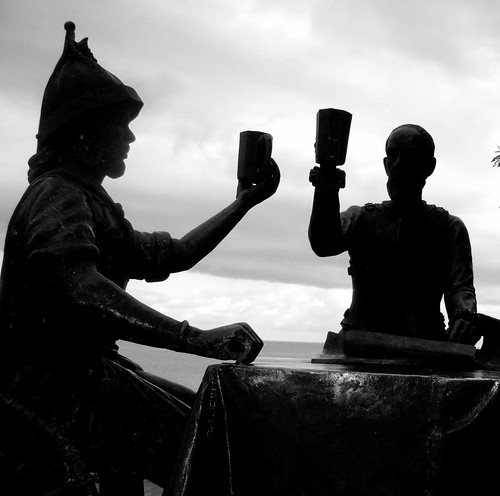 [/caption]
[/caption]Next stop was the blood compact site, the symbolism of this act has signified a coming together of what would later become known as the Filipinos and the conquering Imperialist Spain. What’s wrong about the monument is that it was more like an inuman, tagayan as one tourist perkily suggested. The artist, the great Boholano sculptor Napoleon Abueva, was not informed that Legaspi and the famed Bojolano chieftain drew blood from their chest to mark their accord. The depiction of the ala-KKK wrist cut is untrue as Legazpi's letter would reveal. The other fact is that Loay is the site of Pacto de Sangre.
After the Sandugo site, I intended to go to Panglao island – known for its white sand beaches to many tourist, I planned to visit the churches of Panglao and Dauis as they have been known to have marvelous architectural style, unfortunately heavy rains prevented me to do so, I tried to let it pass but it continued till night time. I had to skip the two sites I long wanted to see, specially Dauis’ Assumption of our Lady for its miraculous well inside the church said to have sprung miraculously, its located at the foot of the altar.
---
Supercat: Pier 3 Schedule
Cebu – Tagbilaran 830, 0030 & 1630
Tagbilaran – Cebu 1030, 1430 & 1830
---
*27 June 2009



No comments:
Post a Comment